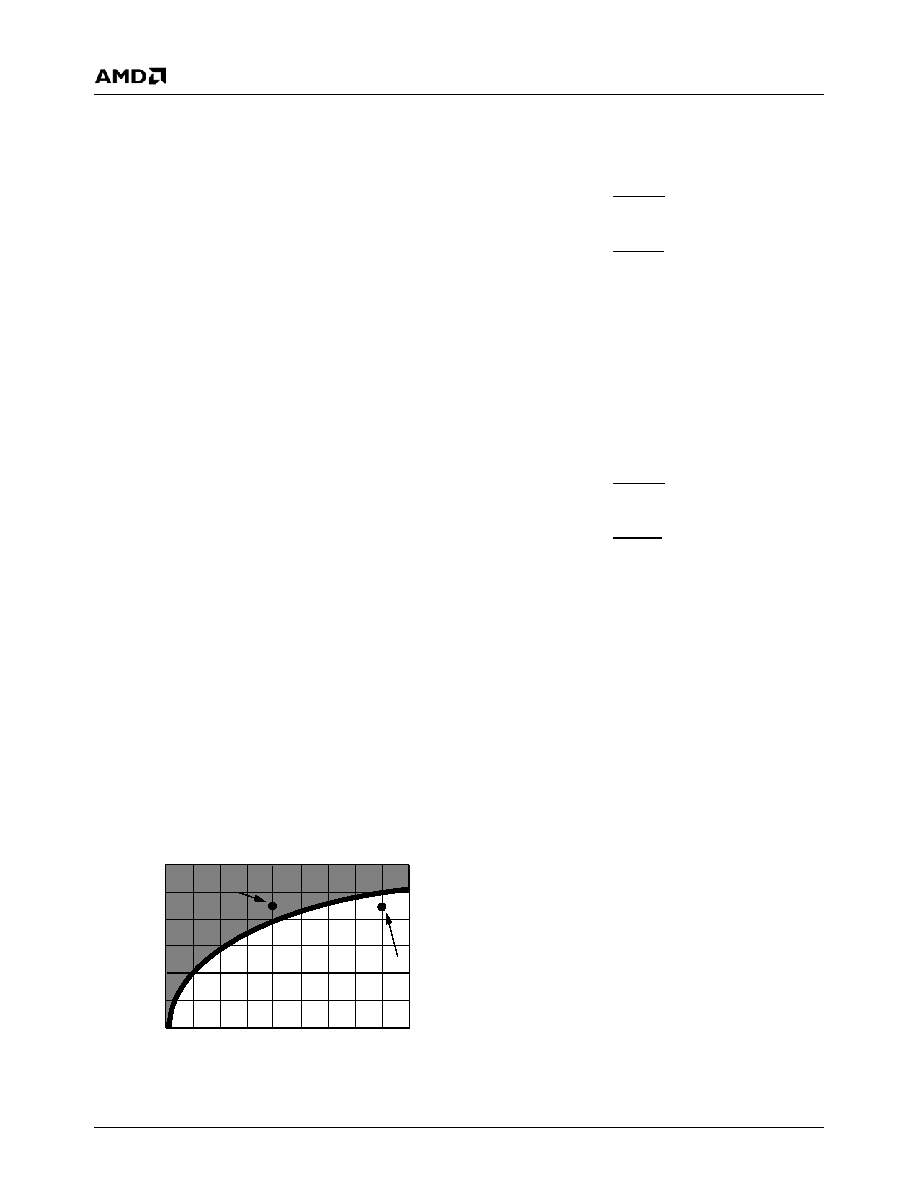- 您現(xiàn)在的位置:買賣IC網(wǎng) > PDF目錄98078 > SC1201UCL-266F (ADVANCED MICRO DEVICES INC) 32-BIT, 266 MHz, MICROPROCESSOR, PBGA432 PDF資料下載
參數(shù)資料
| 型號: | SC1201UCL-266F |
| 廠商: | ADVANCED MICRO DEVICES INC |
| 元件分類: | 微控制器/微處理器 |
| 英文描述: | 32-BIT, 266 MHz, MICROPROCESSOR, PBGA432 |
| 封裝: | 40 X 40 MM, 1.72 MM HEIGHT, 1.27 MM PITCH, LEAD FREE, MO-151, EBGA-432 |
| 文件頁數(shù): | 399/465頁 |
| 文件大小: | 4068K |
| 代理商: | SC1201UCL-266F |
第1頁第2頁第3頁第4頁第5頁第6頁第7頁第8頁第9頁第10頁第11頁第12頁第13頁第14頁第15頁第16頁第17頁第18頁第19頁第20頁第21頁第22頁第23頁第24頁第25頁第26頁第27頁第28頁第29頁第30頁第31頁第32頁第33頁第34頁第35頁第36頁第37頁第38頁第39頁第40頁第41頁第42頁第43頁第44頁第45頁第46頁第47頁第48頁第49頁第50頁第51頁第52頁第53頁第54頁第55頁第56頁第57頁第58頁第59頁第60頁第61頁第62頁第63頁第64頁第65頁第66頁第67頁第68頁第69頁第70頁第71頁第72頁第73頁第74頁第75頁第76頁第77頁第78頁第79頁第80頁第81頁第82頁第83頁第84頁第85頁第86頁第87頁第88頁第89頁第90頁第91頁第92頁第93頁第94頁第95頁第96頁第97頁第98頁第99頁第100頁第101頁第102頁第103頁第104頁第105頁第106頁第107頁第108頁第109頁第110頁第111頁第112頁第113頁第114頁第115頁第116頁第117頁第118頁第119頁第120頁第121頁第122頁第123頁第124頁第125頁第126頁第127頁第128頁第129頁第130頁第131頁第132頁第133頁第134頁第135頁第136頁第137頁第138頁第139頁第140頁第141頁第142頁第143頁第144頁第145頁第146頁第147頁第148頁第149頁第150頁第151頁第152頁第153頁第154頁第155頁第156頁第157頁第158頁第159頁第160頁第161頁第162頁第163頁第164頁第165頁第166頁第167頁第168頁第169頁第170頁第171頁第172頁第173頁第174頁第175頁第176頁第177頁第178頁第179頁第180頁第181頁第182頁第183頁第184頁第185頁第186頁第187頁第188頁第189頁第190頁第191頁第192頁第193頁第194頁第195頁第196頁第197頁第198頁第199頁第200頁第201頁第202頁第203頁第204頁第205頁第206頁第207頁第208頁第209頁第210頁第211頁第212頁第213頁第214頁第215頁第216頁第217頁第218頁第219頁第220頁第221頁第222頁第223頁第224頁第225頁第226頁第227頁第228頁第229頁第230頁第231頁第232頁第233頁第234頁第235頁第236頁第237頁第238頁第239頁第240頁第241頁第242頁第243頁第244頁第245頁第246頁第247頁第248頁第249頁第250頁第251頁第252頁第253頁第254頁第255頁第256頁第257頁第258頁第259頁第260頁第261頁第262頁第263頁第264頁第265頁第266頁第267頁第268頁第269頁第270頁第271頁第272頁第273頁第274頁第275頁第276頁第277頁第278頁第279頁第280頁第281頁第282頁第283頁第284頁第285頁第286頁第287頁第288頁第289頁第290頁第291頁第292頁第293頁第294頁第295頁第296頁第297頁第298頁第299頁第300頁第301頁第302頁第303頁第304頁第305頁第306頁第307頁第308頁第309頁第310頁第311頁第312頁第313頁第314頁第315頁第316頁第317頁第318頁第319頁第320頁第321頁第322頁第323頁第324頁第325頁第326頁第327頁第328頁第329頁第330頁第331頁第332頁第333頁第334頁第335頁第336頁第337頁第338頁第339頁第340頁第341頁第342頁第343頁第344頁第345頁第346頁第347頁第348頁第349頁第350頁第351頁第352頁第353頁第354頁第355頁第356頁第357頁第358頁第359頁第360頁第361頁第362頁第363頁第364頁第365頁第366頁第367頁第368頁第369頁第370頁第371頁第372頁第373頁第374頁第375頁第376頁第377頁第378頁第379頁第380頁第381頁第382頁第383頁第384頁第385頁第386頁第387頁第388頁第389頁第390頁第391頁第392頁第393頁第394頁第395頁第396頁第397頁第398頁當前第399頁第400頁第401頁第402頁第403頁第404頁第405頁第406頁第407頁第408頁第409頁第410頁第411頁第412頁第413頁第414頁第415頁第416頁第417頁第418頁第419頁第420頁第421頁第422頁第423頁第424頁第425頁第426頁第427頁第428頁第429頁第430頁第431頁第432頁第433頁第434頁第435頁第436頁第437頁第438頁第439頁第440頁第441頁第442頁第443頁第444頁第445頁第446頁第447頁第448頁第449頁第450頁第451頁第452頁第453頁第454頁第455頁第456頁第457頁第458頁第459頁第460頁第461頁第462頁第463頁第464頁第465頁

458
AMD Geode SC1200/SC1201 Processor Data Book
Package Specifications
Revision 7.1
10.1.1
Heatsink Considerations
Table 10-2 on page 457 shows the maximum allowed ther-
mal resistance of a heatsink for particular operating envi-
ronments. The calculated values, defined as
θCA, represent
the required ability of a particular heatsink to transfer heat
generated by the SC1200/SC1201 processor from its case
into the air, thereby maintaining the case temperature at or
below 85
°C. Because θCA is a measure of thermal resistiv-
ity, it is inversely proportional to the heatsinks ability to dis-
sipate heat or its thermal conductivity.
Note:
A “perfect” heatsink would be able to maintain a
case temperature equal to that of the ambient air
inside the system chassis.
Looking at Table 10-2, it can be seen that as ambient tem-
perature (TA) increases, θCA decreases, and that as power
consumption
of
the
processor
(P)
increases,
θCA
decreases. Thus, the ability of the heatsink to dissipate
thermal energy must increase as the processor power
increases and as the temperature inside the enclosure
increases.
While
θCA is a useful parameter to calculate, heatsinks are
not typically specified in terms of a single
θCA.This is
because the thermal resistivity of a heatsink is not constant
across power or temperature. In fact, heatsinks become
slightly less efficient as the amount of heat they are trying
to dissipate increases. For this reason, heatsinks are typi-
cally specified by graphs that plot heat dissipation (in watts)
vs. mounting surface (case) temperature rise above ambi-
ent (in
°C). This method is necessary because ambient and
case temperatures fluctuate constantly during normal oper-
ation of the system. The system designer must be careful
to choose the proper heatsink by matching the required
θCA with the thermal dissipation curve of the device under
the entire range of operating conditions in order to make
sure that the maximum case temperature (from Table 9-3
on page 386) is never exceeded. To choose the proper
heatsink, the system designer must make sure that the cal-
culated
θCA falls above the curve (shaded area). The curve
itself defines the minimum temperature rise above ambient
that the heatsink can maintain.
Figure 10-1 is an example of a particular heatsink under
consideration
Figure 10-1. Heatsink Example
Example 1
Assume P (max) = 5W and TA (max) = 40°C.
Therefore:
θ
CA = 9
The heatsink must provide a thermal resistance below 9
°C/
W. In this case, the heatsink under consideration is more
than adequate since at 5W worst case, it can limit the case
temperature rise above ambient to 40
°C (θ
CA =8).
Example 2
Assume P (max) = 9W and TA (max) = 40°C.
Therefore:
θ
CA = 5
In this case, the heatsink under consideration is NOT ade-
quate to limit the case temperature rise above ambient to
45
°C for a 9W processor.
For more information on thermal design considerations or
heatsink properties, refer to the Product Selection Guide
of any leading vendor of thermal engineering solutions.
Note:
The power dissipations P used in these examples
are not representative of the power dissipation of
the SC1200/SC1201 processor, which is always
less than 4 Watts.
0
10
20
30
40
50
24
6
8
10
θCA = 45/9 = 5
Heat Dissipated - Watts
θCA = 45/5 = 9
M
ount
ing
Surf
ace
T
emperat
ur
e
Rise
Abo
v
e
Am
bi
ent
–
°C
θ
CA =
TC TA
P
θ
CA =
85
40
5
θ
CA =
TC TA
P
θ
CA =
85
40
9
相關PDF資料 |
PDF描述 |
|---|---|
| SC12484CV-80 | PALETTE-DAC DSPL CTLR, PQCC44 |
| SC11483CV-110 | PALETTE-DAC DSPL CTLR, PQCC44 |
| SC11483CV-80 | PALETTE-DAC DSPL CTLR, PQCC44 |
| SC12482CV-80 | PALETTE-DAC DSPL CTLR, PQCC44 |
| SC12483CV-66 | PALETTE-DAC DSPL CTLR, PQCC44 |
相關代理商/技術參數(shù) |
參數(shù)描述 |
|---|---|
| SC1201UFH-266 | 制造商:Rochester Electronics LLC 功能描述:- Bulk 制造商:Advanced Micro Devices 功能描述: 制造商:AMD 功能描述: |
| SC1201UFH-266B | 制造商:Rochester Electronics LLC 功能描述:- Bulk |
| SC1201UFH-266F | 制造商:Rochester Electronics LLC 功能描述:- Bulk |
| SC1201UFH-266FR | 制造商:Rochester Electronics LLC 功能描述:- Bulk |
| SC1202 | 制造商:SEMTECH 制造商全稱:Semtech Corporation 功能描述:600mA Low Dropout Positive Voltage Regulator |
發(fā)布緊急采購,3分鐘左右您將得到回復。